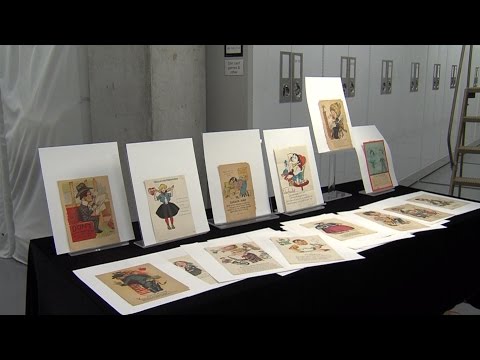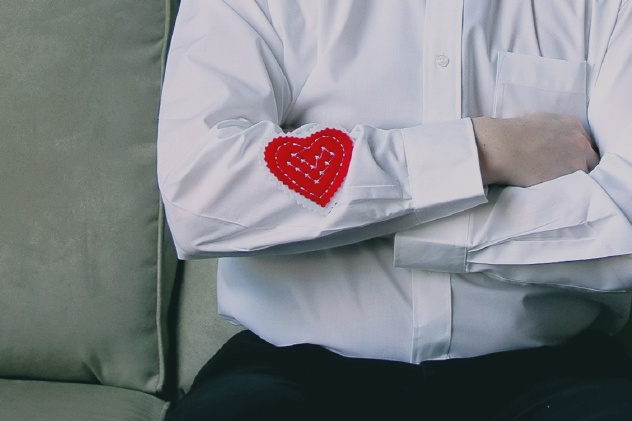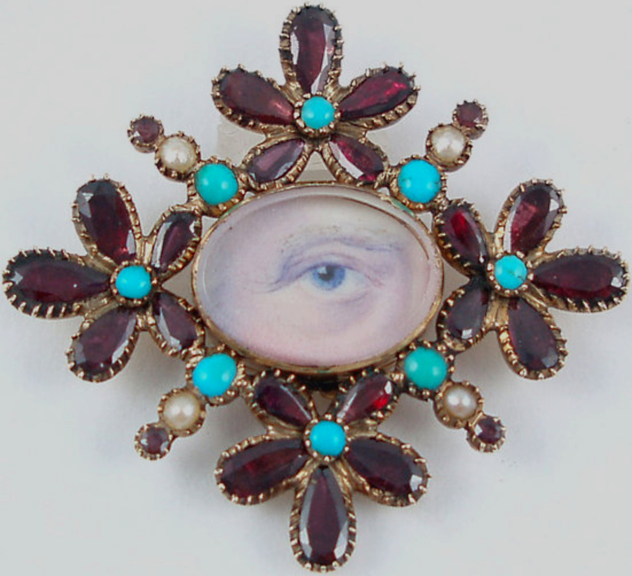When we think about the past, we don’t expect to come upon any outrageous or strange love traditions. However, there are plenty. Below are 10 bizarre love customs from the past. Would you like any of them to return?
10 Vinegar Valentines
Mean Valentine’s Day cards, also known as “Vinegar Valentines,” emerged in the 1800s and were used for humiliation purposes. A complete opposite to the ordinary Valentine’s card, a Vinegar Valentine was a cheaply made card with a satirical image as well as a four- or six-line verse which described and mocked the personality of the recipient. There was a card for every insult you could think of, from baldness to status. More extreme cards even suggested that recipients kill themselves. The targets of these cards were varied and could include neighbors, enemies, bosses, teachers, or simply those whose advances you wanted to dismiss. Watch this video on YouTube One Vinegar Valentine, for example, portrays an image of a quizzical bald man around whose head a swarm of insects, possibly flies or moths, circle about. The little poem underneath the illustration reads: Bald Head. Your bright shining pate is seen at all shows and invariably down in the bald-headed rows where you make conspicuous by your tender care your true ardent love for that one lonesome hair. These Vinegar Valentines, most popular between the 1840s and the 1880s, were mass-produced by the same companies that produced the frilly, sweet Valentine’s Day cards we’re used to today. Note that before the prepaid stamp was introduced, the receiver paid for the mail instead of the sender. The recipient of a Vinegar Valentine not only had the bad luck of receiving the insult but also had to pay for it!
9 Wearing Your Heart On Your Sleeve
Have you ever wondered where the rather strange expression, “wearing your heart on your sleeve,” came from? There are actually three possible explanations for its origin. The first theory suggests that it originated in the Middle Ages when, during a Roman festival, men drew names to determine the identity of their lady friend for the coming year. Once the name of the lady was known, it was worn on the man’s sleeve for the remainder of the festival. This rather strange tradition began after Emperor Claudius II forbade marriage due to his firm belief that unmarried men made better soldiers. As an alternative to marriage, he suggested this strange “temporary coupling.” The second theory suggests that when a knight performed in a jousting match in the Middle Ages, he would dedicate his performance to a certain woman of the court. The knight would attach to his arm something that belonged to the woman, such as a handkerchief, to let everyone know that the match would defend her honor. The third possible origin of the expression comes from a Shakespearean play in which the phrase was first expressed in writing. In Othello, Iago, the play’s main antagonist, makes a confession regarding his disloyal acts and says, “But I will wear my heart upon my sleeve for Daws to peck at,” which basically means that he is fully exposing himself and inviting the birds to peck at him.
8 Escort Cards
Escort cards, also referred to as “flirtation cards,” resembled calling cards and were a humorous way for young people to initiate courtship in late 19th-century America. At the time, most women could hardly speak to a man without a chaperone, and thus, the easiest way for a man to flirt or start up a conversation with the woman he liked was to secretly slip the card into her hands. The woman would then hide the card in some inventive way, such as by slipping it into her glove or by hiding it behind her fan. Watch this video on YouTube Some of these cards were innocent and polite with sayings such as, “May I Have The Pleasure Of Seeing You Home Tonight? If so, keep this card; if not, please return.” Others were far more aggressive and had sayings like “Not Married And Out For A Good Time” printed on them. However, men weren’t the only ones with “acquaintance cards” up their sleeves. A card that says, “You May C Me Home Tonight” as well as a card that reads, “I am Anna ‘Butch’ Engle Who The Devil Are You?” were found by collectors, suggesting that women used escort cards in much the same way as men.
7 Lover’s Eyes
Lover’s eyes, also known as “eye miniatures,” were popular love tokens exchanged between wealthy couples in the late 1800s and early 1900s. A lover’s eye was a painted miniature of the giver’s eye, which was then gifted to their lover. As the name suggests, the lover’s eye revealed solely the eye of the giver, thus allowing the receiver to wear it in public without the fear of anyone recognizing the identity of their loved one. The size of these eye miniatures varied between a couple of millimeters to a couple of centimeters. They were either painted in watercolor on ivory or in gouache on card and were often set in rings, pendants, brooches, snuffboxes, or toothpick cases. According to legend, the first lover’s eye was crafted at the end of the 18th century after the prince of Wales, who later became George VI, fell in love with Maria Fitzherbert, a twice-widowed Catholic. Maria did not reciprocate the prince’s feelings of affection, however, so the prince decided to stage a suicide attempt, after which Maria changed her mind and agreed to his marriage proposal. Nonetheless, Maria soon changed her mind once more, presumably after she realized how difficult it would be to get the king to agree to their marriage, especially seeing as she was a twice-widowed Catholic. She fled to Europe. However, the prince of Wales was undeterred. In November 1785, he sent her a second marriage proposal along with a miniature of his eye, which was set in a locket. A note that accompanied the parcel said, “P.S. I send you a parcel, and I send you at the same time an eye. If you have not totally forgotten the whole countenance, I think the likeness will strike you.” Whether it was the eye miniature or the note that softened Maria’s heart, it worked, for she soon agreed to the prince’s marriage proposal. They got married in a secret ceremony in December 1785. Shortly after, eye miniatures became a popular fad among high society. Today, fewer than 1,000 of these lover’s eyes exist.
6 Future Husband Superstitions
In the past, ladies often relied on superstitions and strange rituals to learn about their future husband. One of the most popular superstitions regarding this involved reading signs from birds. This rather unusual practice dates back to Greek and Roman times. The idea is that the very first bird an unmarried woman spots on Valentine’s Day will predict the character and personality of the man she will marry. For example, if a woman saw a goldfinch, that meant that she would marry a rich man, and if she saw a sparrow, it meant that she would marry a poor man but be very happy. A robin meant a sailor, and a woodpecker meant that no marriage would take place at all. Another ritual that was popular in Great Britain in the 1700s involved pinning five bay leaves sprinkled with rose water to one’s pillow, one in the center and one in each corner. For this ritual to work, the ladies also had to consume salted eggs with no yolk and chant a little prayer that said, “Good valentine, be kind to me; in dreams, let me my true love see.” If all the steps of the ritual were carried out accordingly, the lady would supposedly see her future husband in her dreams. Finally, brave ladies were advised to visit a graveyard on the eve of Saint Valentine’s Day. After completing a special chant and running around the church 12 times, it was believed that an image of their future husband would appear before them.
5 Bundling
In colonial America, bundling was a popular tradition which involved a courting couple to be in bed together, albeit with all of their clothes on. Often, a board would be placed in the middle of the bed to keep the couple separate, or the woman would be put in a bundling bag or a duffel bag–like chastity bag. The parents were also often in the same room as the bundling couple to further ensure that no inappropriate behavior took place. It is believed that the rather strange tradition of bundling was first introduced to the American colonies by the early flood of Scots, Welsh, and other various European immigrants. Since fuel prices in the 18th century were high and the nights often cold, bundling was not only an opportunity for some intimacy, but also a good way for the couple to keep warm. However, according to some scholars, the first occurrence of bundling can be traced back all the way to the biblical story of Ruth and Boaz. According to the story, Ruth, a widow, and Boaz, a wealthy landowner, spent a night together on a threshing room floor and soon after, became husband and wife.
4 Apples Of Love
In 1975, author Benjamin Brody wrote an article called “The Sexual Significance of the Axillae,” which was published in the journal Psychiatry. In the article, Brody described the strange romantic custom present in rural Austrian society, wherein a girl kept slices of an apple in her armpit during a dance. The apples served as a natural deodorant. At the end of the dance, the girl would present the sweaty apple slice to the man she fancied, and if the man returned her feelings, he would bravely eat the apple slice, letting the girl know that where he stood. This strange custom wasn’t used exclusively by women, either, although men generally seemed to forgo the apple and opt for other objects, such as handkerchiefs, instead. An article in the 1899 Journal of American Folklore, for example, states, “To make a girl love you, take a piece of candy or anything she is likely to eat, and put it under either armpit, so that it will get your scent.”
3 Courting Sticks
Strict societal rules in early New England meant that courting was difficult. Couples were rarely left alone on their own, and this meant that the man had to often visit his lady in her family home. Most houses at the time were small, meaning that the whole family often sat in front of the fire in the same small assembly room, making private conversation between the two lovers almost impossible. This was where the invention of courting sticks, also known as “courting tubes,” came in. A courting stick was a hollow tube, 2–2.5 meters (6–8 ft) long and about 2.5 centimeters (1 in) in diameter, fitted with two mouthpieces and two earpieces. To use the courting stick, a couple would sit at the either side of the fireplace and whisper little flirtations to each other. To hear the man speak, the woman would put one end of the tube in her ear, and when the man wanted to hear the woman’s reply, he would put his end of the stick into his ear. Even though the whole family was present in the room, no one else could hear the two lovers’ secret conversation.
2 Lovespoons
The custom of men giving lovespoons to the woman they wanted to court began in Wales in the 16th century. The tradition wasn’t strictly confined to Wales, however; it extended all across Europe and was especially popular in Celtic countries. Lovespoons were presented to a lover similar to how a bouquet of flowers might be presented to a lover today and were usually made by young men during long sea voyages or winter nights. These spoons were always carved from one piece of wood only, and the handle of the spoon was almost always decorated. If the girl accepted the lovespoon, it was a sign that she returned the man’s feelings and that a relationship between the two would begin. It is believed that this is where the origin of the word “spooning” comes from. If the couple decided they were well-suited for each other and decided to stay together, they would often display the lovespoon on one of the walls of their home, similar to how a wedding photograph would be displayed today.
1 Morgengabe
In Germany in the Middle Ages, marriage between a man and a woman always meant the exchange of many gifts between the two families involved. The husband presented a “bride price” (a certain sum of money, property, or some other form of wealth) to the father of the bride, and the latter gave something to the newly married couple in return. However, perhaps the most interesting gift of all was the one that the husband gave to his new bride. The morgengabe, or “morning gift,” was a substantial gift (usually about one-third or one-fourth of the dowry, depending on the law) that a husband gave the bride the morning after they consummated the marriage. Morgengabe was essentially a payment for the woman’s virginity, which, of course, could not be sold until the husband had verified that it did, in fact, exist. In the early Middle Ages, consummation was what made the marriage real, and morgengabe was, in effect, its final guarantee. Laura is a student from Ireland in love with books, writing, coffee, and cats.
























